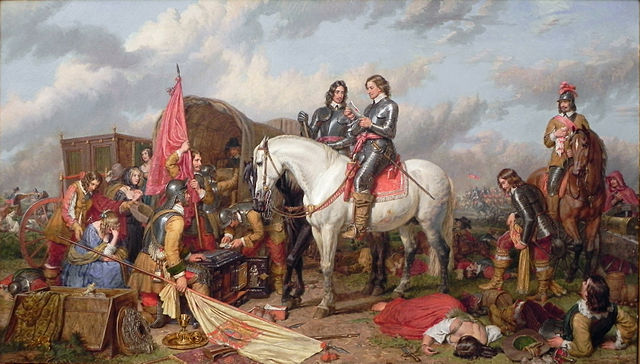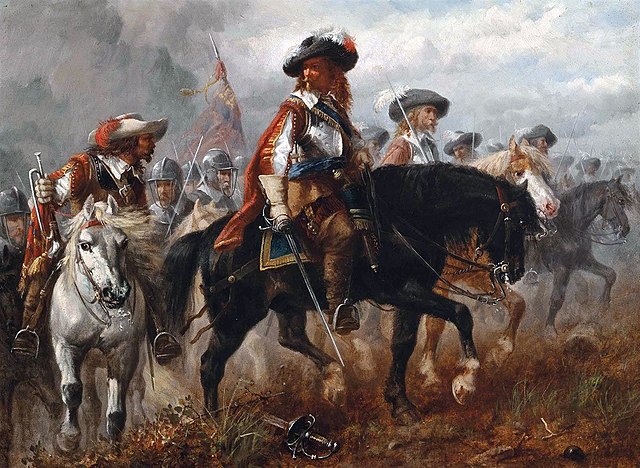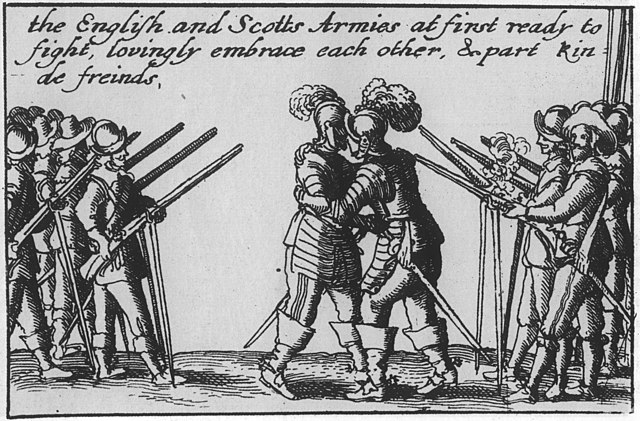Oliver Cromwell was an English statesman, politician, and soldier, widely regarded as one of the most important figures in the history of the British Isles. He came to prominence during the 1639 to 1653 Wars of the Three Kingdoms, initially as a senior commander in the Parliamentarian army and latterly as a politician. A leading advocate of the execution of Charles I in January 1649, which led to the establishment of The Protectorate, he ruled as Lord Protector from December 1653 until his death in September 1658. Cromwell remains a controversial figure due to his use of the army to acquire political power, and the brutality of his 1649 campaign in Ireland.
Portrait by Samuel Cooper, 1656
Cromwell's House in Ely
Portrait of Cromwell's wife Elizabeth Bourchier
Cromwell in the Battle of Naseby in 1645 as depicted in a portrait by Charles Landseer
Wars of the Three Kingdoms
The Wars of the Three Kingdoms, sometimes known as the British Civil Wars, were a series of intertwined conflicts fought between 1639 and 1653 in the kingdoms of England, Scotland and Ireland, then separate entities united in a personal union under Charles I. They include the 1639 to 1640 Bishops' Wars, the First and Second English Civil Wars, the Irish Confederate Wars, the Cromwellian conquest of Ireland and the Anglo-Scottish War of 1650–1652. They resulted in victory for the Parliamentarian army, the execution of Charles I, the abolition of monarchy, and founding of the Commonwealth of England, a unitary state which controlled the British Isles until the Stuart Restoration in 1660.
Monarch of the Three Kingdoms: Charles I in Three Positions by Anthony van Dyck, painted 1635–1636
The spark—riot in St Giles' Cathedral, Edinburgh, reputedly started by Jenny Geddes
King Charles I and Prince Rupert before the Battle of Naseby
The English and Scots armies lovingly embrace each other








